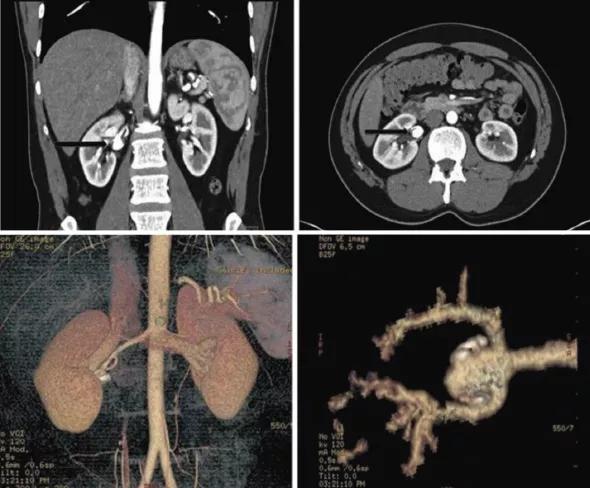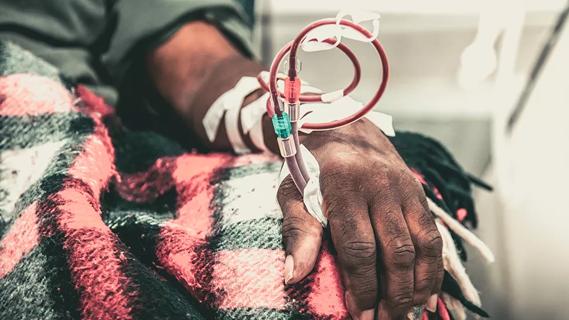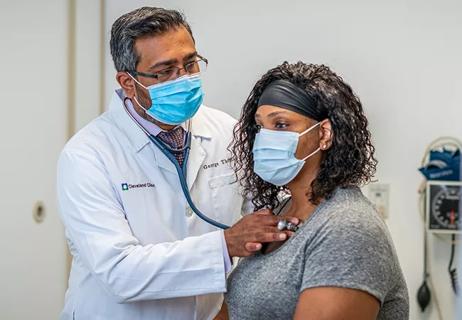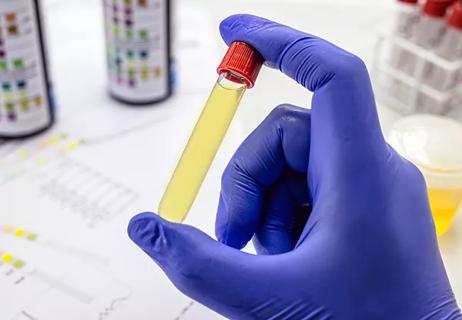Robot overcomes complexity of ‘pure’ laparoscopy

Cleveland Clinic is a non-profit academic medical center. Advertising on our site helps support our mission. We do not endorse non-Cleveland Clinic products or services. Policy
Renal artery aneurysms (RAAs) represent a rare clinical entity, with an incidence of 0.09 percent to 0.3 percent. Endovascular management has largely replaced surgical revascularization when treatment is indicated. Open surgery has traditionally represented the gold standard for definitive repair. Despite its feasibility and satisfactory outcomes in experienced hands, laparoscopic RAA repair is unlikely to be widely used because of the technical complexity.
Intuitive Surgical Inc.’s da Vinci® robot-assisted surgical platform has been shown to overcome many of the difficulties associated with pure laparoscopy as a result of the unique features of “wristed” instruments and 3-D imaging. Here, we describe our robot-assisted laparoscopic technique for resection of RAA, using selective arterial clamping to avoid global ischemia to the kidney.
A 35-year-old man (body mass index 23.39 kg/m2) presented with right-side flank pain. The patient’s blood pressure was within the normal range, as was his renal function. A nonenhanced CT showed a calcified lesion adjacent to the right kidney, highly suspicious for an RAA. A CT angiogram was carried out, which confirmed a 1.6 cm saccular RAA (Figure 1). The patient was seen by an interventional radiologist, and because of the vascular anatomy, it was felt the lesion was not amenable to endovascular treatment. The decision was made to proceed with a robot-assisted laparoscopic repair.

Figure 1. CT angiogram and 3-D reconstruction: Vessels to the upper and lower poles branched off the main renal artery proximal to the lesion. The aneurysm was located at the branch point of the anterior and posterior segmental vessels supplying the midpolar region.
The renal hilum was approached in the typical fashion for a robotic partial nephrectomy. The branches off the main renal artery to the upper and lower poles were dissected, and vessel loops were placed around them. The aneurysm was seen arising from the dominant vessel to the midpolar region. The distal branches arising from the aneurysm (anterior and posterior segmental branches of the midpolar vessel) were also dissected, and vessel loops were placed. At this point, complete control of the renal vasculature had been achieved (Figure 2).

Figure 2. Clockwise from top left: Hilar control; resection of aneurysm; reconstruction of vessel; and completed reconstruction.
After 12.5 g of mannitol was administered, vascular bulldogs were used to selectively clamp the inflow and outflow to the aneurysm. The aneurysm was then resected using the monopolar shears, leaving the back wall of the artery intact. The segmental artery was then reconstructed in a running fashion using 5-0 ProleneTM sutures. A laparoscopic Doppler ultrasound probe was introduced, confirming flow through the reconstructed artery and through the kidney.
Total operative time was 240 minutes, and estimated blood loss was 260 mL. Regional warm ischemia time was 44 minutes. There were no intraoperative complications. Serum creatinine on postoperative day five was 0.9 mg/dL. A renogram was carried out two months after surgery and showed excellent perfusion and drainage of each kidney bilaterally.
In conclusion, we found that use of the robotic surgical platform facilitated aneurysm resection and suturing during this complex procedure. The case described here represents the first reported in urologic literature.
Dr. Kaouk (kaoukj@ccf.org) is Director of the Department of Urology’s Center for Robotic and Image Guided Surgery.

Clinicians should individualize dosing practices based on patient risk factors and preferences

Fully-automated process uses preop CT, baseline GFR to estimate post-nephrectomy renal function

Could mean earlier treatment, but also could have negative effects

Identifying barriers in the renal genetic assessment of Black patients

Getting patients to their goal blood pressure

Study highlights benefits of nephrologist-led urine sediment analysis

Using sequencing data to identify novel factors linked to kidney disease with unknown origin

Program plays key role in diagnosis and management of genetic kidney diseases